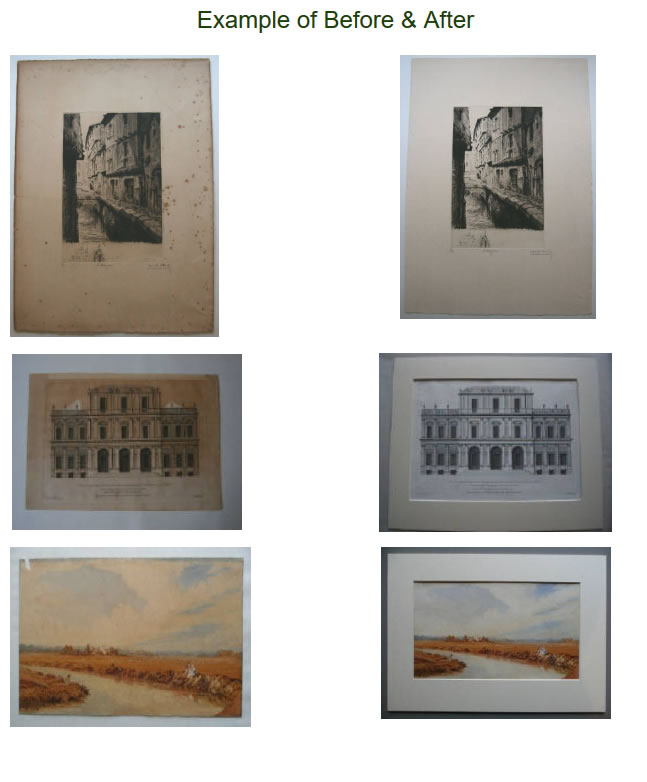Paper Restoration
Restore your damaged Treasures
Moldy materials are obvious candidates for surface cleaning, which may be all that is possible or necessary. Mold activity should first be stabilized by providing the affected materials with a prolonged environment of low relative humidity, generally below 50 percent, so that the mold goes dormant. Mold removal is a delicate procedure and requires careful work hygiene to avoid spreading contamination as much as possible. Mold can also affect the health of personnel, so protective equipment such as respirators, gloves, and fume hoods should be used when removing therefore this work is best left to a professional conservator, paper conservation includes prints and drawings and other works of art on paper as well as archival materials, maps, architectural drawings.
Different levels of conservation treatment are available. Before beginning treatment, we will examine the object using magnification and other specialized examination techniques, if appropriate, and will test the solubility of all components if any treatment involving water or other solvents are contemplated. The conservator then provides a proposal, with recommended treatment and a cost estimate. The choice of treatment will depend on several factors, including the condition of the artifact, its future use, its aesthetic or historic content, the predicted outcome of the treatment, and, of course, the client’s budget.
Treatment does not commence until the client authorizes the proposal.
Common treatments for flat paper objects include: surface cleaning to reduce superficial dirt; washing to reduce acidity, deterioration products, and stains; alkalization to combat future degradation; mending tears; reinforcing brittle paper by backing with Japanese paper, filling areas of paper loss, consolidation of flaking or unstable media, and removal of mold.
In some cases removal of old repairs made with damaging materials or adhesives is necessary. If an object is lined or backed with an unstable or inappropriate material, removal and possibly replacement of the backing may be required. Cosmetic treatments for works with aesthetic value may include stain reduction, in painting areas of image loss, and filling losses with matching paper. These nonessential treatments are performed at the discretion of the client. Various rehousing options are available, including polyester film encapsulation, matting, and re framing in existing frames. We provided extensive variety of antique and contemporary custom picture framing.
Since the cost of treatment depends on the treatment required, conservators must examine an object before an estimate of treatment costs can be given.
Please let us know if you have any questions.

